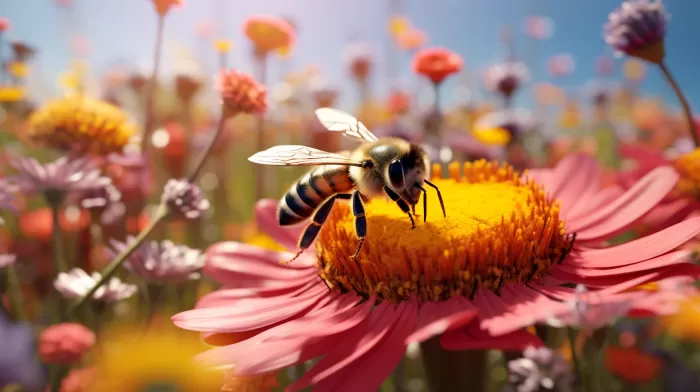The Environmental Protection Agency (EPA) recently conducted a risk assessment study that found neonicotinoids (neonics), the most widely-used pesticides, have a harmful effect on pollinators like honey bees. Consequently, this could mean the end of the potent MRSA honey cure, which is derived from bees.
Neonicotinoids and their effects on bees
Made by Bayer and Syngenta and distributed by multiple companies such as Monsanto and Dupont, neonicotinoids are found in approximately 95% of all US commercial corn, canola, cotton, sorghum, sugar beet, fruit, vegetable, berry, leafy green, and cereal grain crops. The most popular form of neonics is imidacloprid.
For a long time, both the EPA and the Food and Drug Administration refused to accept any connection between the use of neonics and the dwindling population of pollinators. Bee growers, however, have long claimed that neonics are the main cause of decreasing bee populations and colony collapse disorder. Colony collapse disorder is when bees leave the hive and vanish. Bees’ central nervous systems are adversely affected by neonicotinoids, causing problems with their ability to navigate and return to their hive.
Beekeepers in Canada have reported that they often suffer significant losses following corn planting season. They believe that pre-treated corn seeds are the main culprit, as air seeding causes neonicotinoid dust to spread through the air and land on nearby plants.
Purdue University researchers in the US discovered traces of neonicotinoids, thiamethoxam, and clothianidin in bees that had either died or were dying during the spring of 2013. According to these findings, seeding treatments of field crops, primarily corn, are the only significant source of these particular compounds.
In 2012, research from the European Food Safety Commission determined that neonicotinoids pose a considerable risk to bees. They also found that the industry-sponsored science which regulatory agency recommendations were based on were flawed.
Jim Jones, the EPA’s Assistant Administrator, mentioned that if 25 parts per billion of imidacloprid are found in the nectar brought to one hive, it can lead to an adverse effect on that hive’s overall health. This can result in reduced honey production, fewer bees, and a “less robust hive.”
Honey bees: Pollination and superfood production
Honey bees are vital for both crop pollination and the production of honey. Honey is considered a powerful superfood and has been shown to aid in the treatment for methicillin-resistant Staphylococcus aureus (MRSA).
Health benefits of honey include providing an array of nutrients, vitamins, and minerals that trump those found in other food types, such as meats, eggs, milk, grains, and vegetables. It is also low in calories, with only around 100 calories per teaspoon. Furthermore, honey is a live physiological sugar that contains the germs of life, a quality that it shares with other natural sugars found in dates, figs, and raisins.
Researchers from the Waikato Honey Research Unit have found that honey is now being accepted as a standard of care for treating skin ulcers, burns, and wounds. Applying honey on the skin can reduce inflammation, swelling, and pain while eliminating unpleasant odors and promoting rapid skin healing with little scarring. Honey treatment has also been found more effective in certain cases where standard antibiotic and antiseptic therapy had failed to treat infected lesions.



